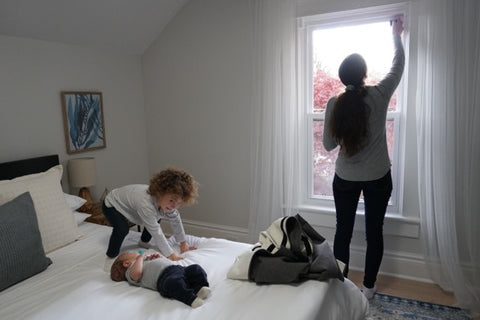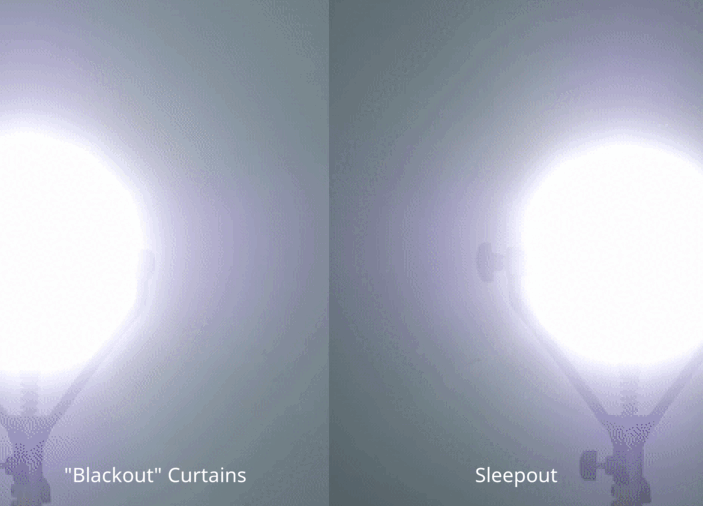Navigating your baby's sleep schedule can be a challenge, particularly when it comes to understanding wake windows and fostering healthy sleep habits for your 6-month-old. You're not alone as you strive to establish a consistent sleep routine for your little one. Let's explore the concept of wake windows and how to effectively manage them for improved sleep and overall development.
The Importance of Wake Windows
A wake window refers to the duration of time a baby stays awake between naps or nighttime sleep. Wake windows play a crucial role in a baby's sleep schedule, as they help regulate their internal clock and foster healthy sleep habits. Wake windows differ for various age groups, but for 6-month-olds, they're especially important as babies continue to develop more consistent sleep routines.
Wake windows directly impact a baby's overall sleep quality. If a baby is awake for too long, they can become overtired, which makes it difficult for them to fall asleep and stay asleep. Conversely, if a baby's wake window is too short, they might not be tired enough to settle down for a nap or nighttime sleep.
Being aware of your baby's wake windows is essential for achieving better sleep quality. As a parent, it's crucial to pay attention to your baby's sleep cues, such as yawning, rubbing their eyes, or becoming fussy, which can indicate that they're ready for sleep.

Ideal Wake Window Duration for a 6-Month-Old
For 6-month-olds, the optimal wake window typically ranges from 2 to 3 hours. However, it's vital to recognize your baby's unique sleep needs and cues, as each baby is different. Some babies may need shorter wake windows, while others can comfortably stay awake for longer periods. It's crucial to observe your baby's sleep cues, such as yawning, rubbing their eyes, or becoming fussy, to determine the appropriate wake window for your little one. Additionally, consider factors like the quality of their previous nap or their level of activity during the day, as these can also influence how long they can stay awake.
Consistent wake windows contribute to improved sleep and overall development. A regular sleep schedule allows your baby to establish a healthy sleep pattern and helps prevent overtiredness or insufficient sleep. Consistent wake windows also make it easier for you to plan your day and establish a predictable routine for your family. Additionally, by maintaining consistency, you're fostering a sense of security and familiarity for your baby, which can positively affect their emotional well-being.

The 6-Month-Old Wake Window: Sleep Inconsistencies
At six months, babies often encounter sleep inconsistencies due to various factors, such as developmental milestones, increased awareness of their surroundings, and evolving sleep needs. By understanding these factors, you can support your baby through this challenging phase and help them along their sleep journey.
Developmental milestones, while vital for growth and development, can sometimes disrupt your baby's sleep. As your baby becomes more aware of their surroundings, they might struggle to settle down for sleep or stay asleep. Moreover, their sleep needs may change as they grow, necessitating adjustments to their sleep schedule.
Implementing a bedtime routine with calming activities, such as a warm bath, reading a book, or singing lullabies, can help your baby wind down and signal that it's time for sleep. Nursery-friendly blackout curtains are an excellent choice for a nursery when it comes to managing wake windows for your 6-month-old. By effectively blocking out external light sources, blackout curtains help create a dark and soothing space, promoting better sleep for your little one. You can create a peaceful and comfortable nursery environment while effortlessly navigating your baby's sleep schedule. By incorporating these routines and using blackout curtains to maintain a consistent sleep environment, you can help your 6-month-old overcome sleep inconsistencies.

The Last Nap for a 6-Month-Old: When Should It Be?
The timing of the last nap depends on your baby's sleep schedule and individual needs. Generally, the last nap should end around 3 to 4 hours before bedtime. This timing ensures that your baby has enough time to build up sleep pressure before it's time for nighttime sleep, but not so much that they become overtired. The duration and quality of the last nap can also influence how well your baby sleeps at night.
However, it's important to remember that each baby is different, and the ideal timing for the last nap may vary depending on factors such as your baby's sleep needs, daily routine, and overall sleep schedule. Be prepared to adjust the timing of the last nap as needed, taking cues from your baby's sleepiness and energy levels. It's also essential to consider your family's schedule and commitments, as these factors can influence the timing and structure of your baby's sleep routine. By being flexible and responsive to your baby's needs, you can better support their sleep and development.
Maintaining Steady Wake Windows: Methods and Techniques
In order to create and sustain regular wake windows, consider utilizing these practical suggestions and approaches:
Monitor your infant's sleep signals: Keep a close eye on signs that your baby is sleepy, such as yawning, rubbing their eyes, or becoming irritable. These signals can assist you in determining when your child is ready to sleep and allow you to modify the schedule as required. By being attentive to your baby's needs, you can make sure their wake windows correspond with their natural sleep preferences.
Stay adaptable and modify the plan: As your child grows and matures, their sleep requirements may shift. Be ready to alter the wake windows and sleep schedule to accommodate these changes. Keep an eye on your baby's sleeping habits and make necessary changes to maintain regularity and encourage their overall growth.
Incorporate routines and traditions: Consistent sleep patterns are greatly influenced by routines and traditions. Create a stable bedtime routine, such as taking a warm bath, reading a story, or singing lullabies, to help your baby relax and indicate that it's time to sleep. Likewise, establish a consistent naptime routine to facilitate a smooth transition from being awake to falling asleep.
Focus on daytime napping: Make sure your baby has enough chances to nap during the day, as this can directly affect the quality of their nighttime sleep. By concentrating on maintaining steady wake windows and prioritizing naps, you can help your baby develop a healthy sleep pattern that supports their growth and development.
Coordinate with caregivers: If your child spends time with other caregivers, like grandparents or daycare providers, make sure they are informed about your baby's wake windows and sleep schedule. Maintaining consistency across all caregivers can reinforce your baby's sleep habits and enhance their overall well-being.
Establish an appropriate sleep setting: A soothing and cozy sleep environment is essential for creating regular wake windows for your 6 month old. Creating sleep associations in your baby early on with complete darkness is a great way to transition to longer wake windows. Blackout curtains can contribute to the perfect ambiance by blocking light and outside disturbances, but they are not always easy to install. Consider no-drill blackout curtains which you can install on your own. By adopting these suggestions and techniques, you can create and maintain steady wake windows for your baby, fostering improved sleep and encouraging their overall growth.

Be Patient With Yourself!
As your baby grows, their sleep needs will change and develop. It's easy to feel overwhelmed, but no one knows your baby better than you. Grasping and managing wake windows for your 6-month-old is crucial for developing healthy sleep habits and fostering their overall growth. By applying the strategies mentioned, you can design a more consistent sleep routine for your child. Don't forget to observe your baby's distinct sleep needs and signals, and be patient as you navigate this demanding stage of their growth.
Take the next step in creating a restful environment for your baby by investing in the most recommended blackout curtain by sleep specialists. With the help of these high-quality curtains, you can ensure your baby gets the best sleep possible. Use code WELCOME10 at checkout for $10 off and experience the difference a great night's sleep can make for you and your little one.



